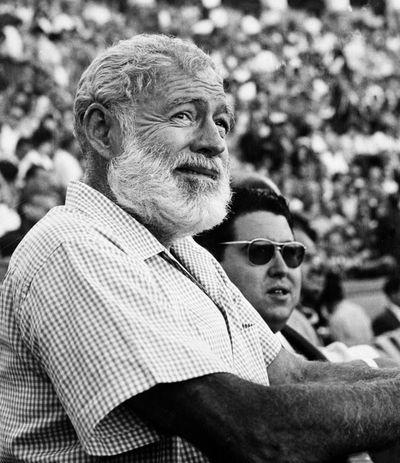Two rarely seen Hemingway stories coming out

NEW YORK – Two Ernest Hemingway stories written in the mid-1950s and rarely seen since will be published next year.
The director of Hemingway’s literary estate, Michael Katakis, told the Associated Press recently that “The Monument” and “Indian Country and the White Army” will be included with a special reissue of the author’s classic “For Whom the Bell Tolls.” The new edition also will include the story “A Room on the Garden Side,” which had been little known beyond the scholarly community before The Strand Magazine published it over the summer.
“For Whom the Bell Tolls: The Hemingway Library Edition” is scheduled for the summer of 2019. The celebrated novel, set during the Spanish Civil War, was in the news earlier this year. It was a favorite of Sen. John McCain, who died in August, and the title of an HBO documentary about the Arizona Republican and Vietnam War veteran.
Katakis, whose “Ernest Hemingway: Artifacts from a Life” comes out this week, has overseen numerous posthumous projects. He has worked in coordination with the author’s son, Patrick Hemingway, on reissues of “A Moveable Feast,” “Green Hills of Africa” and other books, along with the controversial publication of “True at First Light,” which Ernest Hemingway had left unfinished when he killed himself in 1961.
“I’ve been talking to Patrick for a long time and we always ask the same question, `Is there a reason for this to be released?“’ Katakis said during a telephone interview. He declined to comment further on why they had decided to publish the 1950s stories, part of the Ernest Hemingway Collection at the John F. Kennedy Library and Museum in Boston.
Hemingway wrote five pieces in 1956, reflecting upon his time as a correspondent and participant in World War II. He would tell his publisher, Charles Scribner Jr., the stories likely needed to come out after his death because they were “a little shocking” and dealt “with irregular troops and combat and with people who actually kill people.”
One of those works, “Black Ass at the Crossroads,” was released years ago. Another story, “The Bubble Reputation,” will for now remain unpublished.
“Ernest Hemingway: Artifacts from a Life” also draws from the collection at the JFK library. It features photographs, letters and extensive annotations. In a brief foreword, Patrick Hemingway cites a memento not pictured in the book, or anywhere since he was a child: a trout fishing trunk used by the author on outings with his family.
“That fishing trunk for me enhanced the elegant ritual of my mom and dad as they waded side by side six feet off each bank downstream, casting toward each other their terminal cluster of three wet flies, letting their lines drift and straighten out before raising their rods and casting again,” Patrick Hemingway wrote.
But, he added, “even the finest bowl and bell will crack.” The marriage was over by 1940, the trunk was gone a few years later.